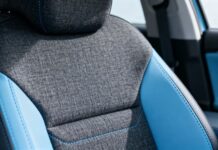In the fields of engineering and computer science, robotics is a subfield that focuses on the conception, design manufacturing and operation of robots. Industrial robots are being used in the current textile industries of today and they are playing an important part in a variety of jobs, including stitching, cutting fabric, and even sorting items with regard to their classification. Automation, programmability and the ability to move in three or more axes are the hallmarks of industrial robots, which are designed specifically for use in production. They are able to readily do activities that are technically complex. When it comes to the textile sector, the usage of robots is becoming more prevalent as technology continues to improve. A new age of invention and cooperation between humans and machines is about to begin, and we are going to witness it very soon.
The applications of robotics in the textile industry include:
The use of robotics in the production of yarn and fabric:
The handling of bales involves the packaging of fabrics and cotton in bales. These are really massive and difficult to move around easily. Industrial robots are able to do this work with ease. A great number of industrial robots are tailored to do weight lifting. As an example, take KUKA’s heavy-duty robots. Also, they are able to separate bales with ease.
Carding: Robots might be trained to pick up cameras from each card, set them on a truck, and transfer them to a manufacturing facility for drawing frames for conventional operation. This would be included into the carding process.
Splicing in autoconers and other marvels: This joins the yarn ends using a splice that is practically similar to the yarn. It may be used when the end breaks or when the bobbin is changed. The most recent automated splicer arm functions in a manner similar to that of a robot, and it provides an even more favorable overlap in the splicing zone as well as an even better opening of the yarn ends.
Nonwoven Robotics: The researchers are working on building robots that may be used for the manufacture of nonwoven and fitted three-dimensional structured clothing (such as firemen suits).
The employment of robotics in the cleaning of textile industry machinery and equipment is becoming more common. Robots equipped with specialized cleaning tools and sensors are being used in the textile industry. There are a variety of cleaning methods that these robots use, including brushing, spraying, and others.

Robotics’ Potential Applications in the Garment Manufacturing Industry:
The use of robotics in printing: printing robots are capable of creating a variety of patterns, logos, and designs across fabric. Automated 3D printing robots are yet another recent innovation in the printing industry.
The use of robotics in the process of spreading fabric: Previously, cloth spreading was done manually by people. Fabric spreading may now be accomplished with the assistance of autonomous robots.
The use of robotics in laser cutting: Laser cutting is a very beneficial tool for cutting fabric. For the purpose of cutting many plies of heavy fabrics, computer-controlled laser cutting systems are an appropriate option. Increasing the amount of mass manufacturing in the textile sector is facilitated by this.
One of the most difficult aspects of garment production is stitching, and robotics has made it possible to automate this process. Sewing clothing that is fashioned in three dimensions is a highly complicated operation. The process of stitching is being carried out by a variety of robots of varying categories. Sewing robots (sewbo) and LOWRY sewbots are two examples. With the purpose of fabric grabbing and handling, the Sewbot is an industrial robot that is used in the garment business. It is possible to manufacture a whole outfit with the use of these robots, which allow for total automation. And sewbots are capable of doing a variety of tasks, including cutting, stitching, waking up, labeling and more.
Robotics in the examination of clothing: Manual fabric inspections are unable to find all of the flaws. As a means of enhancing the effectiveness of the fabric inspection process, the use of automated machinery or robots is of great assistance. On the other hand, automating the inspection process is one of the most challenging obstacles to overcome. Automatic fabric inspection may be accomplished by the use of a number of different methods, including the statistical approach, the spectral approach, and the model-based approach.
When it comes to folding and packaging, robotics may be used. Robots are able to do the tasks of folding and packing items. The clothing may be taken by them, folded, and then packed in the appropriate manner.
Some of the Benefits of Robotics in the Textile Industry:
- Productivity, efficiency, and quality have to be increased.
- Capable of carrying out tasks in potentially dangerous environments
- We do not need any environmental comfort.
- More precise than a human worker
- Make continuous efforts.
- Lightning-fast speed Zero unawareness
Robotics in the textile industry has the following disadvantages:
- High costs may make the issue of unemployment worse.
- They are needed to be maintained by professionals.
Concluding remarks:
Changing the face of the textile sector is the introduction of robots. They are accelerating, improving, and lowering the cost of products. Moreover, they are undergoing a transformation in the production process. Robotics in the textile industry seems to have a bright future. With regard to this industry, there are still an infinite number of opportunities for further development. The use of robots in the textile sector has not altered by a significant amount throughout the process. This is due to the fact that there is less research on robotics for textile production. Increasing the amount of money invested in this industry and taking the essential actions will allow for growth and innovation to occur. The sooner we are able to use robots in the textile business, the more opportunities we will have to reap hundreds of advantages.



































